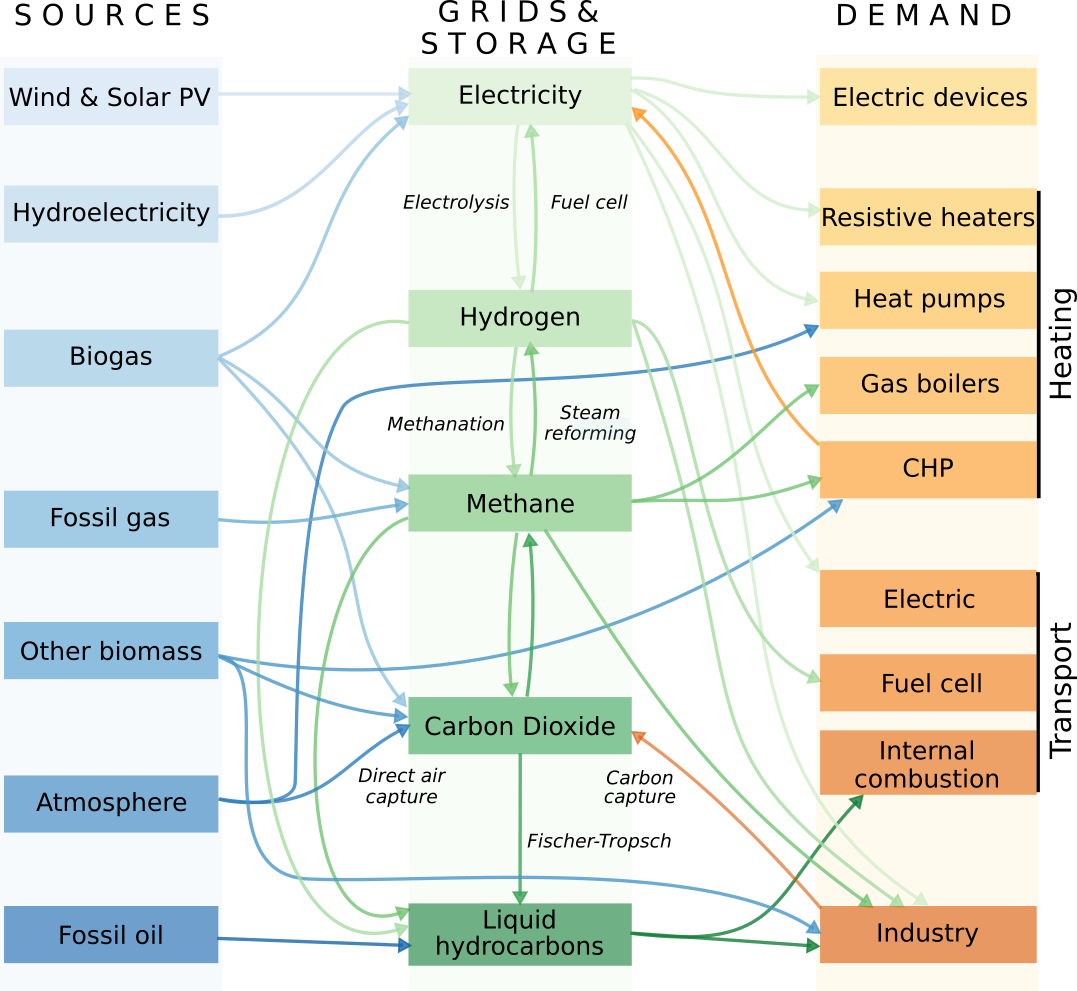5.3 KiB
PyPSA-Eur-Sec: A Sector-Coupled Open Optimisation Model of the European Energy System



PyPSA-Eur-Sec is an open model dataset of the European energy system at the transmission network level that covers the full ENTSO-E area.
PyPSA-Eur-Sec builds on the electricity generation and transmission model PyPSA-Eur to add demand and supply for the following sectors: transport, space and water heating, biomass, industry and industrial feedstocks. This completes the energy system and includes all greenhouse gas emitters except waste management, agriculture, forestry and land use.
This diagram gives an overview of the sectors and the links between them:

PyPSA-Eur-Sec was initially based on the model PyPSA-Eur-Sec-30 described in the paper Synergies of sector coupling and transmission reinforcement in a cost-optimised, highly renewable European energy system (2018) but it differs by being based on the higher resolution electricity transmission model PyPSA-Eur rather than a one-node-per-country model, and by including biomass, industry, industrial feedstocks, aviation, shipping, better carbon management, carbon capture and usage/sequestration, and gas networks.
PyPSA-Eur-Sec includes PyPSA-Eur as a snakemake subworkflow. PyPSA-Eur-Sec uses PyPSA-Eur to build the clustered transmission model along with wind, solar PV and hydroelectricity potentials and time series. Then PyPSA-Eur-Sec adds other conventional generators, storage units and the additional sectors.
Currently the scripts to solve and process the resulting PyPSA models are also included in PyPSA-Eur-Sec, although they could in future be better integrated with the corresponding scripts in PyPSA-Eur. A stumbling block to sharing solve_network.py between PyPSA-Eur and PyPSA-Eur-Sec is the different extra_functionality required to build storage and CHP constraints.
PyPSA-Eur-Sec is designed to be imported into the open toolbox PyPSA for which documentation is available as well.
This project is maintained by the Energy System Modelling group at the Institute for Automation and Applied Informatics at the Karlsruhe Institute of Technology. The group is funded by the Helmholtz Association until 2024. Previous versions were developed by the Renewable Energy Group at FIAS to carry out simulations for the CoNDyNet project, financed by the German Federal Ministry for Education and Research (BMBF) as part of the Stromnetze Research Initiative.
Documentation
Getting Started
-
System Message: ERROR/3 (<stdin>, line 74); backlink
Unknown interpreted text role "doc".
System Message: ERROR/3 (<stdin>, line 76)
Unknown directive type "toctree".
.. toctree:: :hidden: :maxdepth: 1 :caption: Getting Started installation
Implementation details
-
System Message: ERROR/3 (<stdin>, line 85); backlink
Unknown interpreted text role "doc".
-
System Message: ERROR/3 (<stdin>, line 86); backlink
Unknown interpreted text role "doc".
System Message: ERROR/3 (<stdin>, line 88)
Unknown directive type "toctree".
.. toctree:: :hidden: :maxdepth: 1 :caption: Implementation details spatial_resolution supply_demand
Foresight options
-
System Message: ERROR/3 (<stdin>, line 99); backlink
Unknown interpreted text role "doc".
-
System Message: ERROR/3 (<stdin>, line 100); backlink
Unknown interpreted text role "doc".
System Message: ERROR/3 (<stdin>, line 102)
Unknown directive type "toctree".
.. toctree:: :hidden: :maxdepth: 1 :caption: Foresight options overnight myopic
References
-
System Message: ERROR/3 (<stdin>, line 112); backlink
Unknown interpreted text role "doc".
System Message: ERROR/3 (<stdin>, line 114)
Unknown directive type "toctree".
.. toctree:: :hidden: :maxdepth: 1 :caption: References release_notes
Warnings
WARNING: This model is under construction and contains serious problems that distort the results. See the github repository issues for some of the problems (please feel free to help or make suggestions). There is neither documentation nor a paper yet, but we hope to have a preprint out by summer 2020. We cannot support this model if you choose to use it.